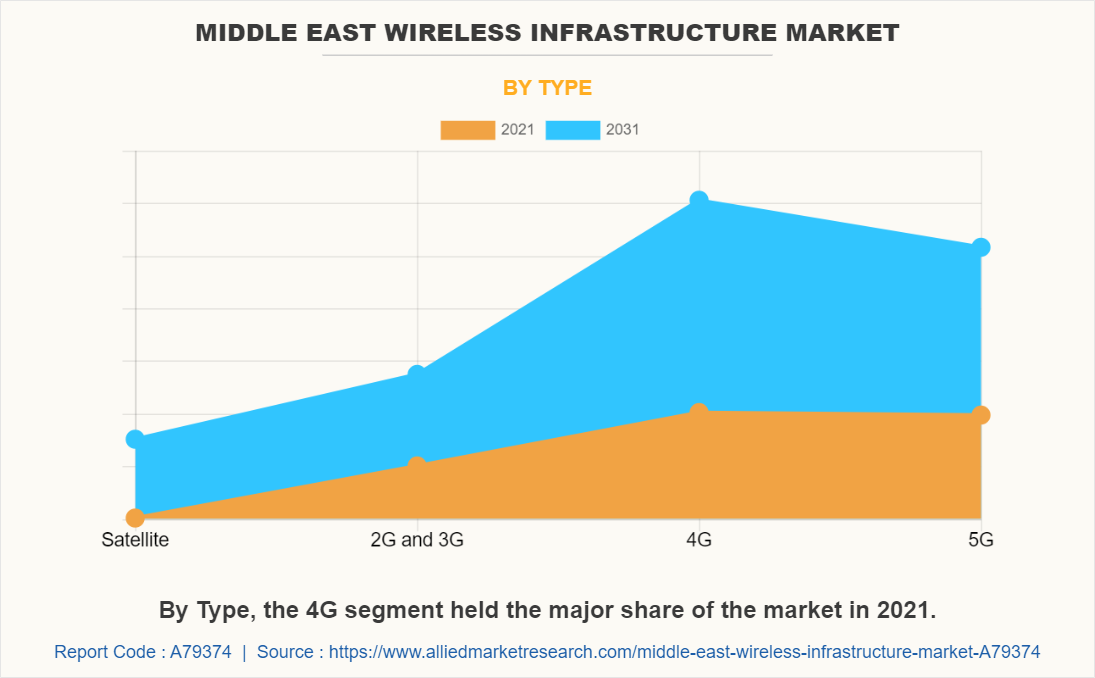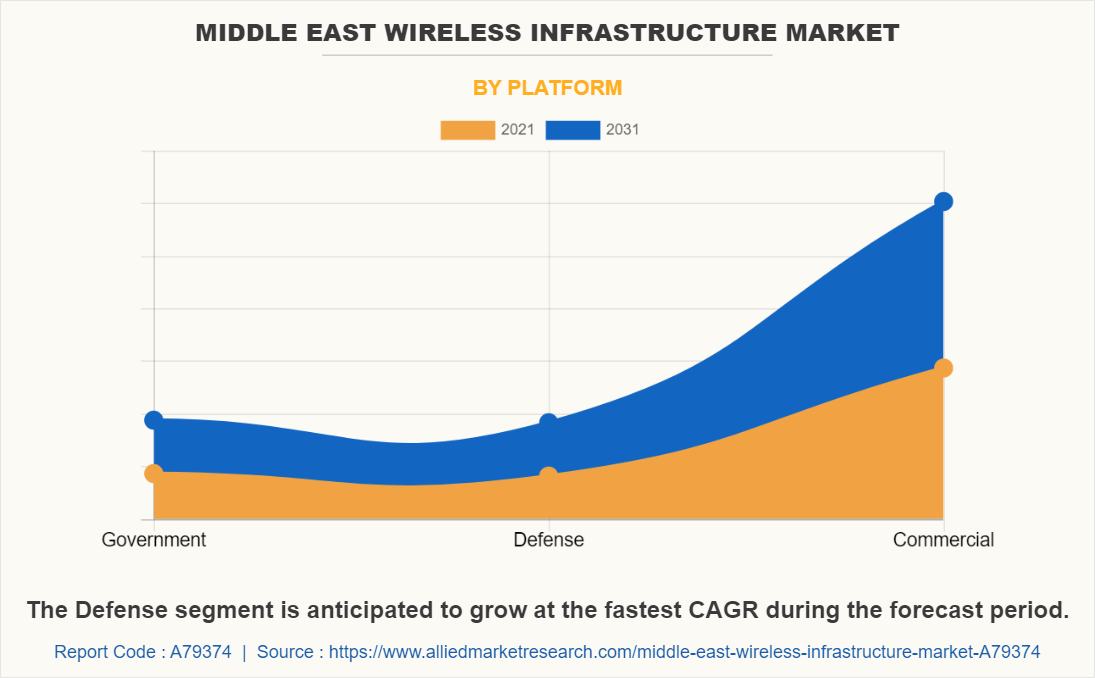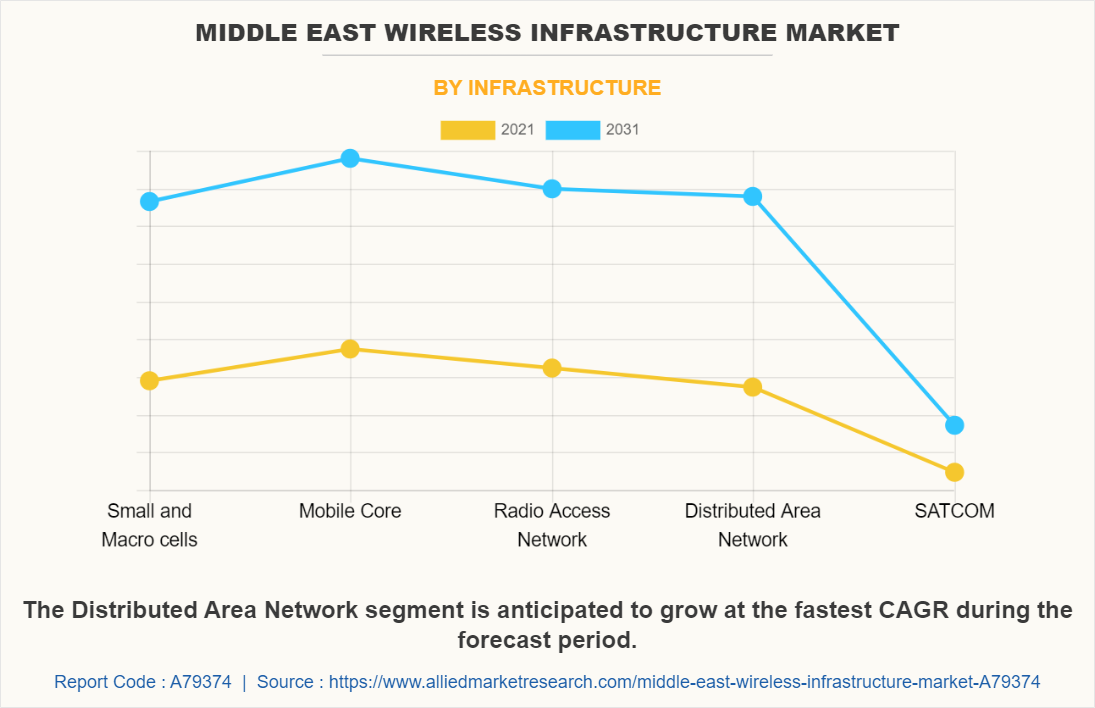Wireless infrastructure includes base stations, antennas, routers, services and software. Satellite, 4G, 3G, and 2G mobile communications systems, as well as small and macro cellular infrastructures are types of wireless infrastructures available to the users. Furthermore, mobile core, radio access network, distributed area network, and SATCOM are also being included in the wireless infrastructure sector. The Middle East wireless infrastructure market is gaining traction owing to the growing use of smartphones and other devices connected to the cloud. The region is increasingly using wireless infrastructures to meet data requirements owing to increased internet penetration rate.

The Middle East wireless infrastructure market is primarily driven by high internet penetration rate across the region. Developing countries such as Saudi Arabia and the UAE are majorly investing in advanced wireless infrastructures to provide its users access to technologies such as 4G/LTE and 5G. Furthermore, supportive initiatives taken by governments to promote telecom infrastructure are resulting in higher demand for such services.

On the other hand, high cost of implementation of these technologies and the long duration required for such projects are expected to hamper the market growth. Furthermore, customer preference towards personalized services which require complex cloud-based infrastructures are expected to pose a challenge for growth in the near future. In addition, increase in government regulations and complexity associated with setting up new telecom infrastructure also present a major challenge for the market growth in this region.

Increase in demand for advanced communications services is anticipated to dive the growth of the Middle East wireless infrastructure market. There is an increase in demand for new and improved intrastructures owing to implementation of 5G services by different telecom players such as Saudi Telecom Company, Etisalat, and du. Moreover, implementation of the IoT infrastructure is expected to be opportunistic in this domain.

The Middle East wireless infrastructure market is segmented into type, platform, and infrastructure. By type, the market is categorized into satellite, 3G, 4G, and 5G. By platform, it is segregated into government, defense, and commercial. Based on the infrastructure the market is divided into Small and Macro cells, Mobile Core, Radio Access Network, Distributed Area Network, and SATCOM.
Major telecom players such as Ericsson, ZTE, Huawei, Nokia, Samsung, TowerXchange, InoStairs Wireless Solutions, Cisco, Aruba Networks, and Alcatel-Lucent are involved in the development of the Middle East wireless infrastructure market. These companies are adopting product launches, acquisitions, partnerships, business expansions, investments, and collaborations to sustain the competition in the market
In addition to the major players, other emerging companies such as Vertex Wireless Solutions, Ceryx Broadband Solutions, Strix Systems, Airspan Networks, and Teleste Communications are also involved in the market. These companies are involved in providing solutions for telecommunications networks, including wireless service availability, secure backhaul, and network optimization services. Furthermore, these companies have been targeting regional customers through strategies such as pricing flexibility, quality assurance, and solutions to bridge the technology gap.
Companies are focusing on investment in research and development. This, in turn, makes way for creating solutions that address the requirements of the Middle East region. Innovation is also focused majorly toward making infrastructure adaptable, scalable, and secure.
Key Benefits For Stakeholders
- Enable informed decision-making process and offer market analysis based on the current market situation and estimated future trends.
- Analyze the key strategies adopted by major market players in the Middle East Wireless Infrastructure market.
- Assess and rank the top factors that are expected to affect the growth of the Middle East Wireless Infrastructure market.
- Top Player positioning provides a clear understanding of the present position of market players.
- Detailed analysis of the Middle East Wireless Infrastructure market segmentation assists to determine the prevailing market opportunities.
- Identify key investment pockets for various offerings in the market.
Middle East Wireless Infrastructure Market Report Highlights
| Aspects | Details |
| Forecast period | 2021 - 2031 |
| Report Pages | 83 |
| By Type |
|
| By Platform |
|
| By Infrastructure |
|
| Key Market Players | Ericsson, Cisco, Alcatel-Lucent, ZTE, InoStairs Wireless Solutions, TowerXchange, Samsung, Nokia, Huawei, Aruba Networks |
The Middle East Wireless Infrastructure Market is estimated to reach $19.5 billion by 2031
Ericsson, ZTE, Huawei, Nokia, Samsung, TowerXchange, InoStairs Wireless Solutions, Cisco, Aruba Networks, Alcatel-Lucent are the leading players in Middle East Wireless Infrastructure Market
1. Enable informed decision-making process and offer market analysis based on current market situation and estimated future trends.
2. Analyze the key strategies adopted by major market players in middle east wireless infrastructure market.
3. Assess and rank the top factors that are expected to affect the growth of middle east wireless infrastructure market.
4. Top Player positioning provides a clear understanding of the present position of market players.
5. Detailed analysis of the middle east wireless infrastructure market segmentation assists to determine the prevailing market opportunities.
6. Identify key investment pockets for various offerings in the market.
Middle East Wireless Infrastructure Market is classified as by type, by platform, by infrastructure
Loading Table Of Content...
Loading Research Methodology...



